(The original Burmese version was published on the ISP-Myanmar Facebook page on April 2, 2021.)
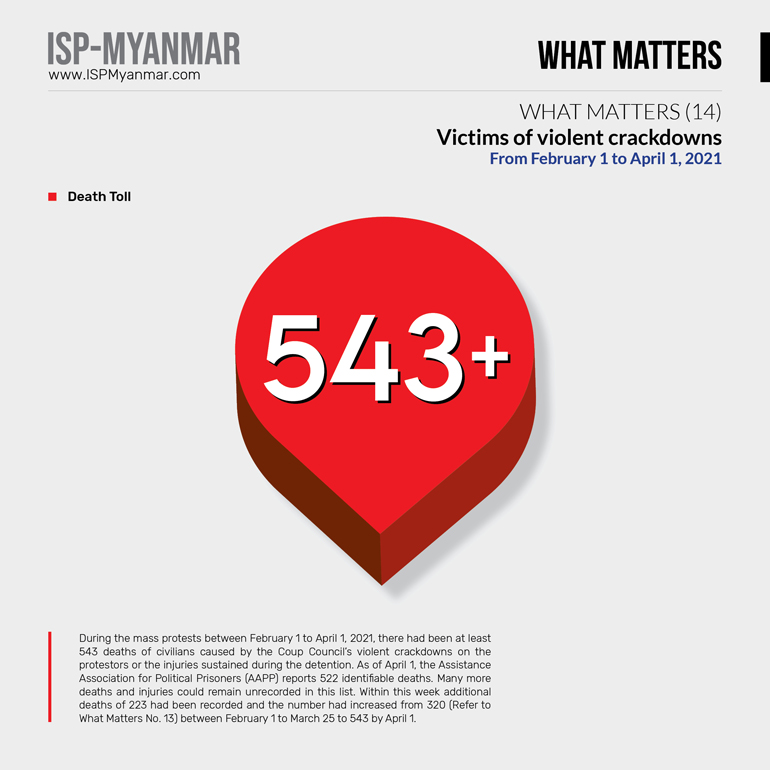
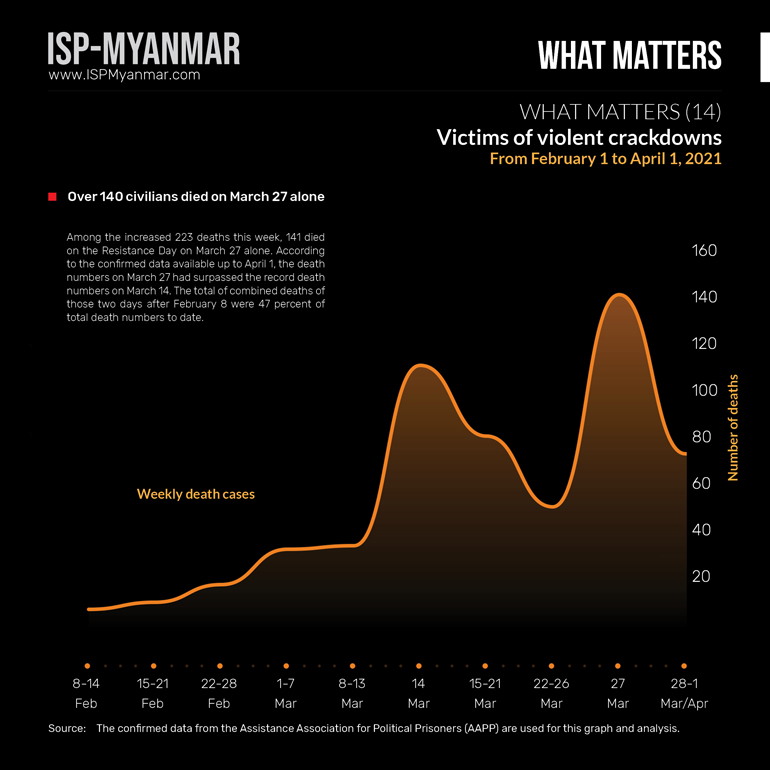

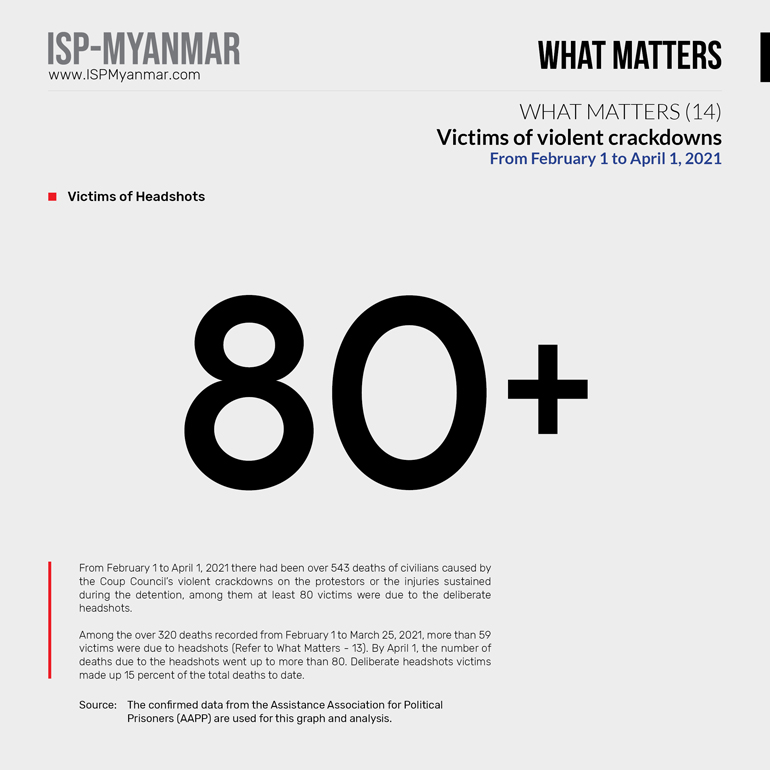
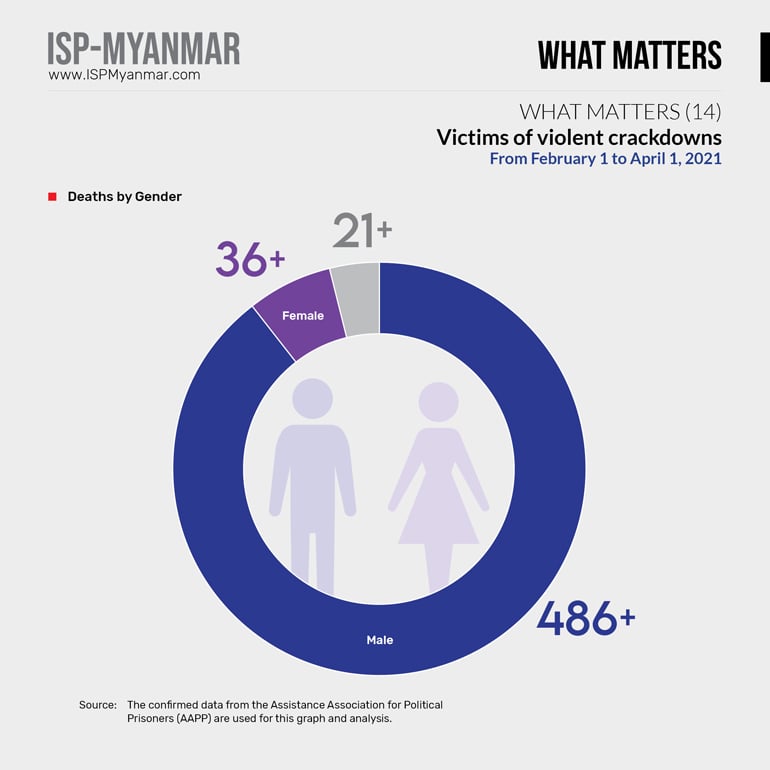
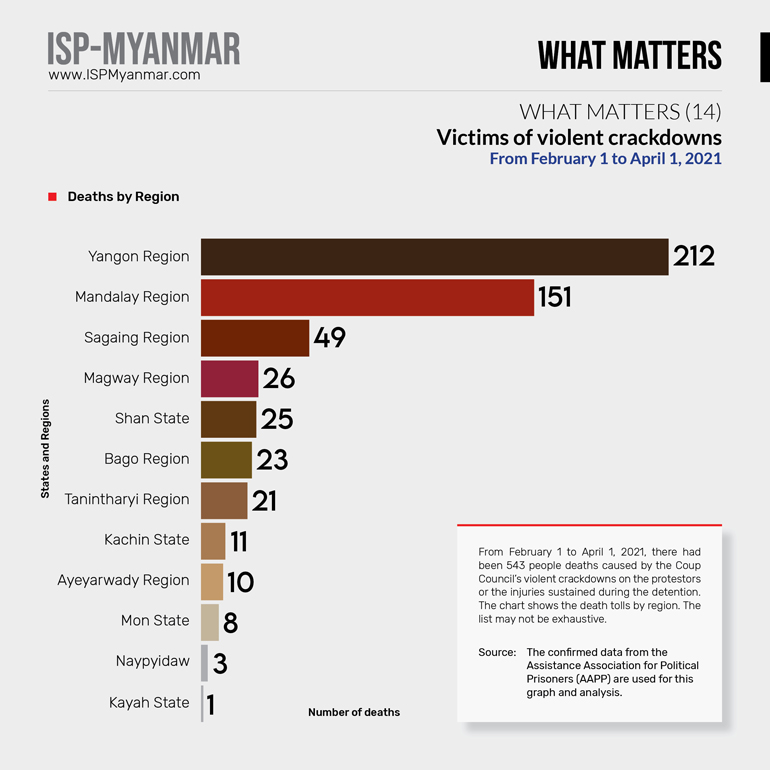
∎ Key findings in brief
Following the February 1, 2021, military coup d’état, mass protests have erupted across Myanmar. Because of the violent crackdowns against the mass protests, and injuries inflicted during the custody in the detention centers, as of April 1, 2021, there have been at least 543 civilian casualties. Moreover, many more were injured, and serious violation of human rights and human dignity committed by the security forces have been widespread. The Assistance Association for Political Prisoners (AAPP) recorded personal data of the 522 deaths, although there may be many more who are not yet on this list.
Compared to the recorded total deaths of over 320 by March 26 (please see What Matters No. 13 published in Burmese on March 26, 2021), there have been more than 223 additional casualties within this week. Among the victims of violent crackdowns, protesters under the age of 18 years old and the age group of 18-30 were still at the top of the death tolls. At the same time, the number of casualties of the age group of 31-40 has also kept increasing.
Moreover, as of April 1, 2021, the number of victims of sniper headshots increased to 80, compared to last week record of over 59 by March 26 and, thus, the number of headshot victims made up 15 percent of the total death counts. By region, during this week, Yangon recorded the highest number of casualties, which is followed by Mandalay Region with the second-highest number of deaths.
Among the additional 223 victims of the violent crackdown within this week, all the 141 were killed on the 76th Anniversary Revolutionary Day, which falls on March 27, alone. According to the confirmed data available up to April 1, the daily casualties of the day surpassed the highest death tolls on March 14 and reached a new record number on March 27 as the deadliest day. Since after February 8, the combined death tolls on these two days (March 14 and 27) have become 47 percent of the total deaths to date. This instance of hundreds of civilian casualties, not by natural disasters, but by the violent crackdown of the security forces of the junta over mass protests in urban areas, reached a record of the country’s highest death tolls since 1988.
In addition, according to the reports of news media groups and some independent organizations, the security forces of the military junta allegedly have started using hand grenades and arson attacks on the protesters.
Reports suggest that, on the deadliest day of March 27, a civilian was killed by a hand grenade in Kyauk Myaung Ward, Tamwe Township in Yangon and similar cases were also reported in Hlaing Township and South Dagon Township, Yangon. On March 27 and 29, there has been unconfirmed news of the Coup Council’s security forces charged arson attacks on two civilians and burnt them to death. On March 29, the Coup Council alleged that a police officer in murphy (not in police uniform) was missing while on discrete patrolling in Minte Ekin Ward, Mandalay, and later found dead by an arson attack. However, the report was left unconfirmed as none of the independent news outlets and media could verify it, but only the state-run media.
∎ Why does it matter?
By looking at the extend of the violent crackdowns and examining the corps and body parts of the victims who died during protests and those who were killed in the targeted shootings, it can be determined whether the security forces complied with the internationally agreed standard rules and regulations to be followed when dealing with mass protests. These are important data that can be explored from a human rights approach as well as from a transitional justice perspective.
∎ Other relevant readings:
AAPP has collected detailed data about the anti-coup protestors who were victimized during the violent crackdowns. Since the February 1 military coup, AAPP’s database has kept recording the numbers and causes of the death of protesters, the ways the security forces used in responding to the anti-coup d’état mass protests, and evidence of human rights and human dignity violations by the security forces. Daily logs of AAPP is also available on the organization’s website and Facebook pages. Information can also be sent to AAPP for those who are not yet on the list.
◉ What Matters ISP-Myanmar covers a section entitled “What Matters” that could benefit the current anti-coup mass movements through a series of research work. This section aims to introduce issues and data that should be addressed in a short, easy-to-read manner and accessible to everyone based on research findings. The introduced facts, cases, and data are intended to be a thought-provoking stimulus, but not as a definite view. The purpose is to make the data presented more accurate and complete. In this series, ISP would try to answer three questions in general: 1) what is the issue of concern? 2) why does it matter? 3) is it relevant for Myanmar? Addressing these questions does not involve an exhaustive examination but covers the relevant elements and claims. Thus, each issue of “What Matters” provides a list of suggested readings and references for further study. In the current situation, this section will focus on research findings related to three research topics. These are: 1) research findings related to coup d’état 2) research findings on mass movements 3) research findings on how the international community (especially powerful foreign countries that can provide significant support ) intervened in military coups and the authoritarian states. The research will be based on comparative studies. Research data collected by local partner organizations will also be requested and respectfully presented in various forms from time to time.
